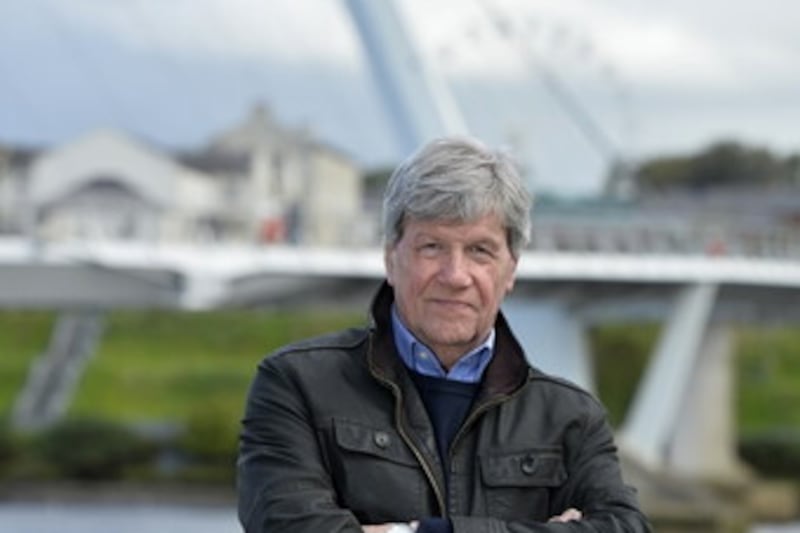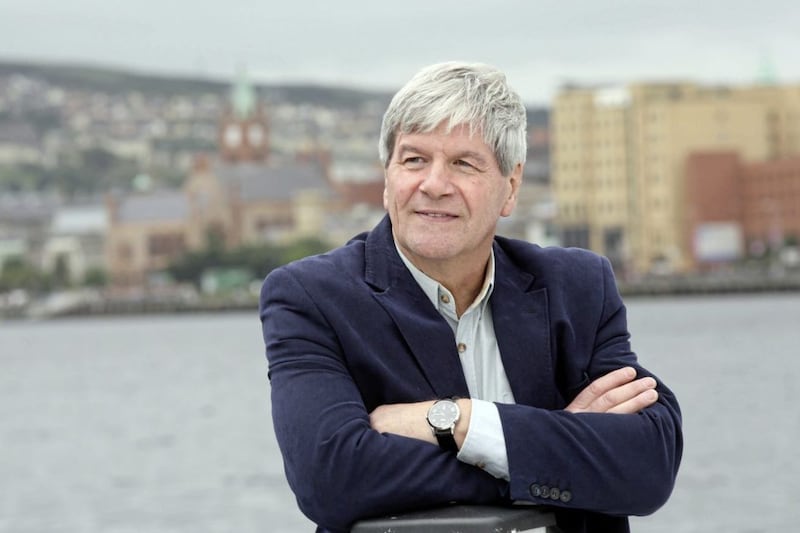"The past is with you all the time. I personally think you cannot be in any walk of life without knowing about your own history. It’s useful for the present day and for the future,” enthuses Joe Mahon.
Although he doesn’t class himself as a historian, the Derry broadcaster has been helping bring local history and heritage to life on our screens for the past four decades.
Instantly recognisable for his gentle commentary full of genuine enthusiasm and wonder, the 72-year-old returns to our screens next Tuesday with a new series of Mahon’s Way on UTV.
I caught up with Joe for a chat just after he had returned home from a holiday in Donegal and asked him if he could resist delving into the history of an area during time away from work.
“Obviously, my life's a holiday,” laughs Joe, who loves nothing more than exploring his homeland, for business and pleasure.
“I don't know how many years I've been doing these types of programmes, but out of the 12 episodes we are doing in this new series of Mahon’s Way, there are four places I have never visited before - Killinchy in Co Down, Seskinore in Co Tyrone and Cloghan and Burt Castle in Co Donegal.”
The first of seven children, Joe was born inside the famous Derry Walls, in a now demolished flat in Upper Magazine Street, wedged between First Derry Presbyterian Church and the Apprentice Boys Memorial Hall.
Having been placed in the world surrounded by architectural heritage and history, does he believe he was destined for this career?
“I only lived there for a year and a half, but maybe I was. There are very few people nowadays who can say they were born in Derry's Walls,” he proudly reflects.
Once taught by John Hume, Joe began his working life as an English and history teacher at St Peter’s Christian Brothers School in Creggan and became involved in Columcille debating society, alongside fellow Derry broadcasters Anita Robinson and Gerry Anderson.
Read more:
Lesser Spotted Joe Mahon: I balance my six cups of coffee a day with half a dozen oranges
Anne Hailes: Young Dara McAnulty's an expert naturalist, Joe Mahon's a busy man
Joe Mahon: I keep on doing Lesser Spotted Journeys for the sheer love of it
He gradually moved into broadcasting as a producer, director and writer, before becoming head of BBC Radio Foyle and later setting up his company, Westway Film Productions.
However, Joe reminisces that he could have been destined for Hollywood.
“During my time at BBC Radio Foyle I made a film with Denis Bradley, who ran the Northlands Centre in Derry, for people with addiction problems.
Despite “virtually no budget", their feature, The Best Man, won the Top Drama Award and Jury Award at the 1986 Celtic Media Festival.
“It was totally unexpected. I would like to say that from that I've gone on to make feature films," he laughs.
Joe made the move from behind the camera to presenting following the death of Ollie McGilloway at the age of 58.
He had produced six of his McGilloway’s Way series, and after his untimely passing, Joe was “eventually persuaded” by UTV to go in front of the camera.
“They wanted me to present a programme centred around communities and people, filmed in the rural hinterland.”
Joe wasn’t the only shy person to appear on screen in the mid-1990s on Lesser Spotted Ulster.
“Back then nobody wanted to be on TV. You had to drag people in front of the camera - they were too nervous and self-conscious, especially people from the country. But we always set out to respect people and their views.
“I'm not saying we were responsible for it, but our programme grew at the same time as the burgeoning interest in our local history, culture and heritage. Now we are swamped with ideas and participants.”
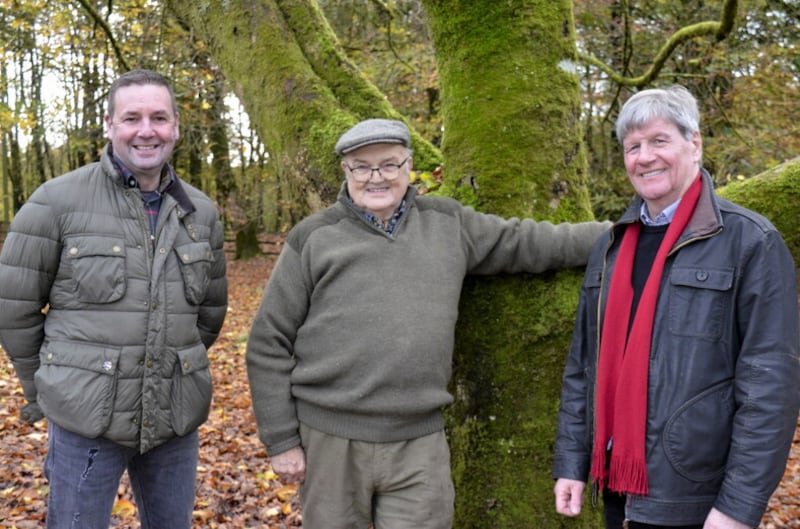
He has also witnessed a lot of changes in technology, with the advent of mobile phones, digital cameras and drones.
“We use drone footage quite liberally, but always with great relevance. It shows the lay of the land and allows you to see things you can't see on the ground, such as a rampart around an old castle.”
Two of Joe’s five children work alongside him: Patrick as producer and Sarah in editing.
So, how does he feel about taking orders from his son?
“Let me put it this way - I do listen to him. I have to stay in touch with the younger generations,” he laughs.
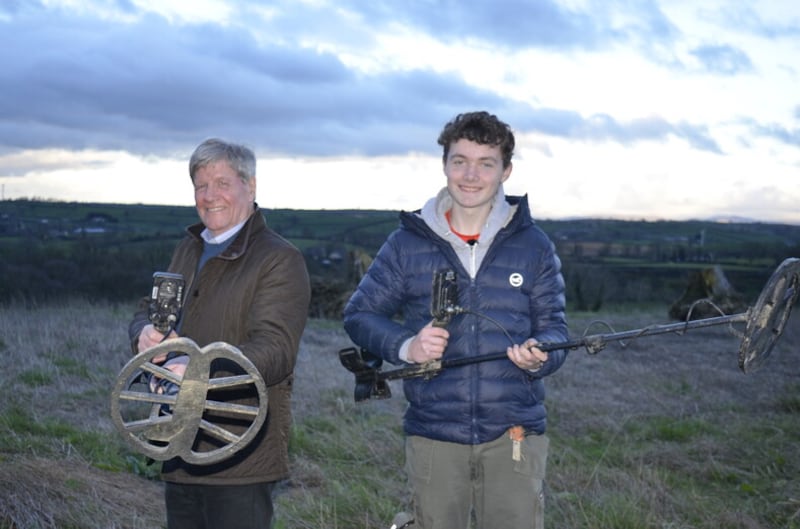
Amongst the young people he meets in this series is 14-year-old metal detectorist Owen Brown from Poyntzpass.
“Owen has found coins, buttons and flint and has a real genuine knowledge of his area.
“The advice I gave him is when you look back, you also need to look sideways at what else was happening in the country at that time. That gives you a wider picture and context.”
Joe uses the example of the building of the Newry canal, which opened in 1742 to transport coal from Coalisland to Dublin.
“Why it took them so long to build is that its completion coincided with Bliain an Áir (Year of Slaughter). Twenty per cent of the population in the east of Ireland perished of hunger or disease - a higher proportion than died in the Great Famine.”
The reason for the famine?
“Climate crisis, which is nothing new. It was the end of what is called the Middle Ice Age and the whole land was frozen solid for a year and a half.
“It was a dire situation. The mills were frozen so they couldn’t grind flour. Ironically, after that they decided to grow a more reliable crop - potatoes,” adds Joe, with a wry laugh.
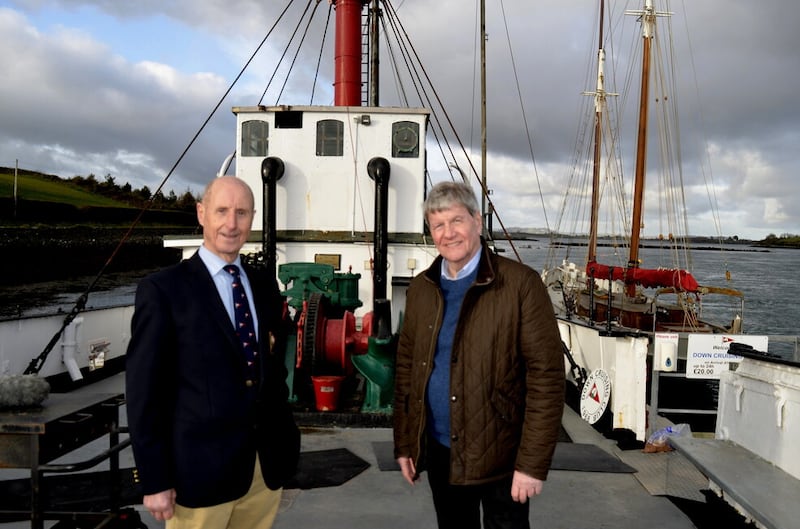
This series of Mahon’s Way kicks off with Joe visiting Killinchy and exploring our maritime heritage onboard the restored Petrel Lightship. He also visits St Mary’s Church and discovers the role the Livingstone family played in the evolution of modern day America.
Episode two takes viewers to Seskinore Forest, where Joe discovers the species that are now planted and protected there.
Later, Joe visits Clogher Valley, where he learns about Augher cinema and is highly impressed by a unique woollen replica of St Macartan’s Church of Ireland cathedral in Clogher.
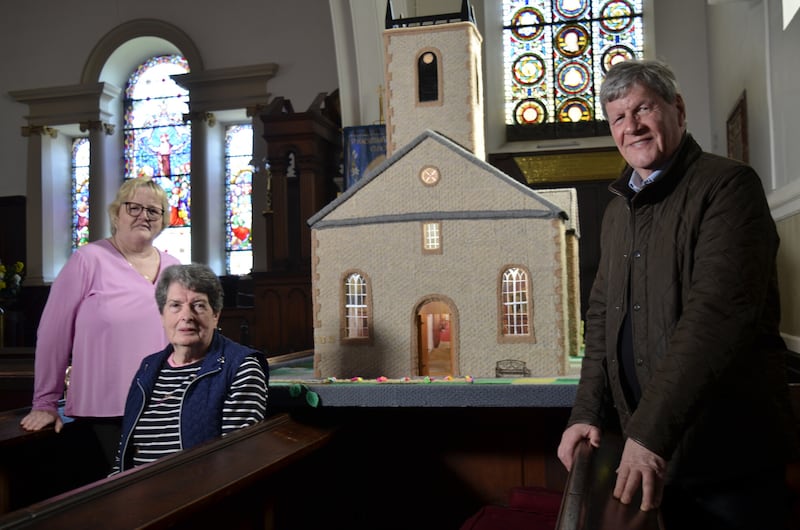
“Afterwards, I superimposed their knitted cathedral on an outside shot of the cathedral - and it was absolutely perfect in every detail.”
Joe is delighted to see communities proud of their heritage and passing on traditional skills to future generations.
“We are making our future prosperity out of our past. I’ve witnessed that in this series in places like Cullybackey and Portrush."
In the seaside town, he discovers the history of Portrush harbour, hears from storyteller Kate Murphy at the stunning Magheracross viewing point and discovers evidence of a Neolithic settlement in the Corrstown area.
He also discusses the Portrush Rocks, which “were very famous at the turn of the 19th century” after the puzzling discovery of fossils along a 250m stretch of the shore.
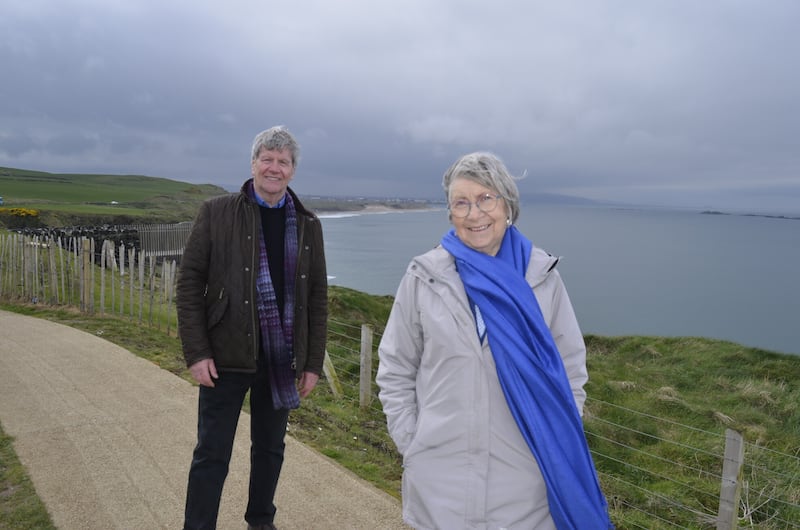
What you won’t find is any bloopers or outtakes from Mahon’s way.
“We leave all the outtakes in. If it's funny, we use it. Everyone likes a bit of craic.”
With no thoughts of retirement, Joe is already looking ahead to future programmes.
“We have a list of 16 places we would like to go next week: if we get the go ahead for another series.”
We end our chat discussing rail transport and the recent All-Island Strategic Rail Review which recommended restoring our railway network, including the former Portadown to Derry line.
“I would love to see that. It's greener, it's cleaner, it’s more efficient, it’s faster and will link-up places that really should never have been disconnected in the first place,” says Joe, who explored this very issue a few years ago in his programme Ulster Giants.
“This country spent a vast fortune building a network of railways north and south before there was a border, but it only lasted for less than 100 years.
“It's like someone saying, 'See all the roads we have built? We’re not going to use them anymore'.”
Mahon’s Way returns to UTV on Tuesday August 8 at 8:30pm and can be viewed afterwards at itv.com/utvprogrammes.

